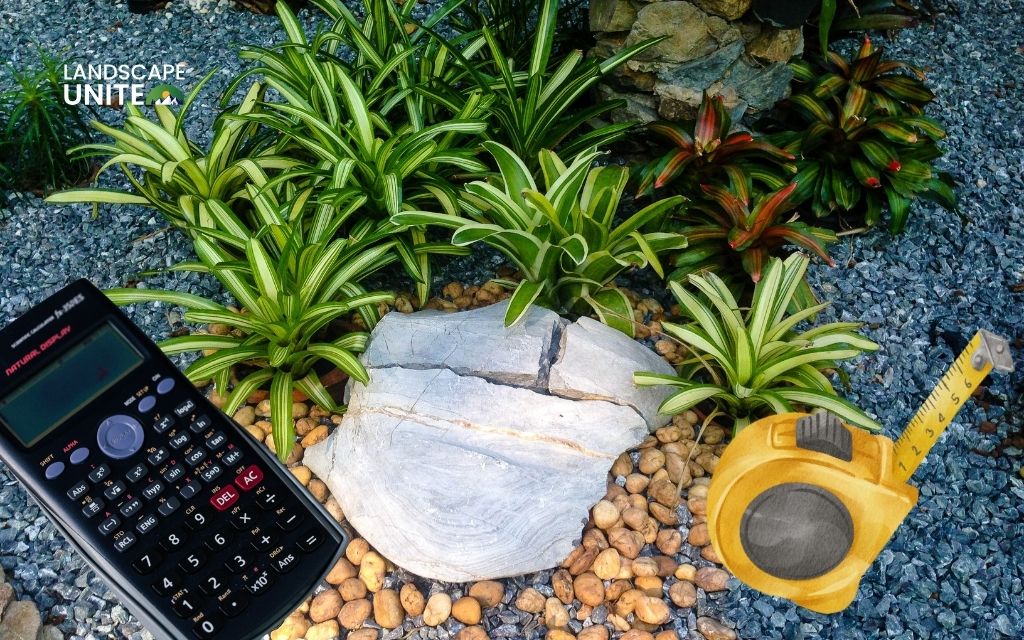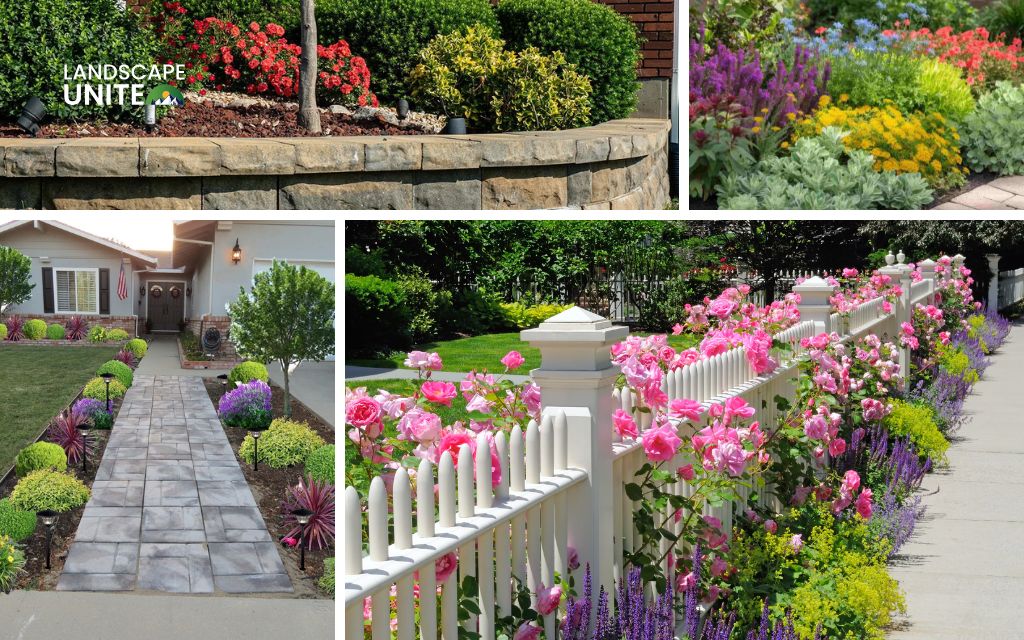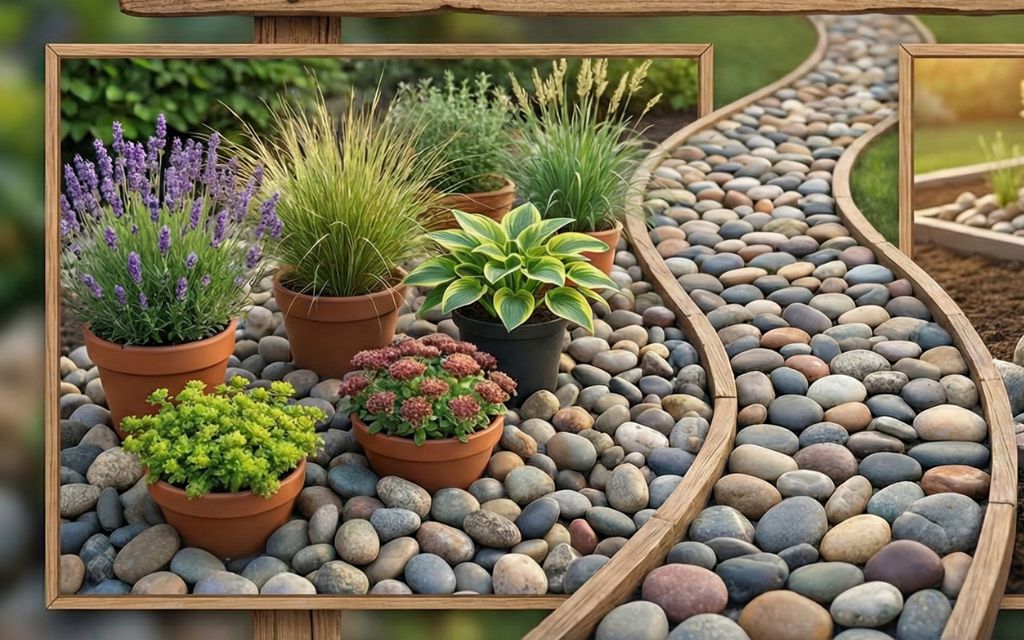The right plants for front of house landscaping can dramatically boost curb appeal, increase property value by up to 20%, and make your home feel warm and inviting year-round.
Whether you’re starting from scratch or refreshing tired beds, choosing the best plants for your front yard involves more than just picking pretty flowers. This complete guide will help you select the best plants to plant in front of the house, from low-maintenance perennials to evergreen shrubs that provide structure through all seasons.
We’ve organized 25 top-performing plants specifically for American landscapes, tailored to different styles, climates, and maintenance preferences across the country.
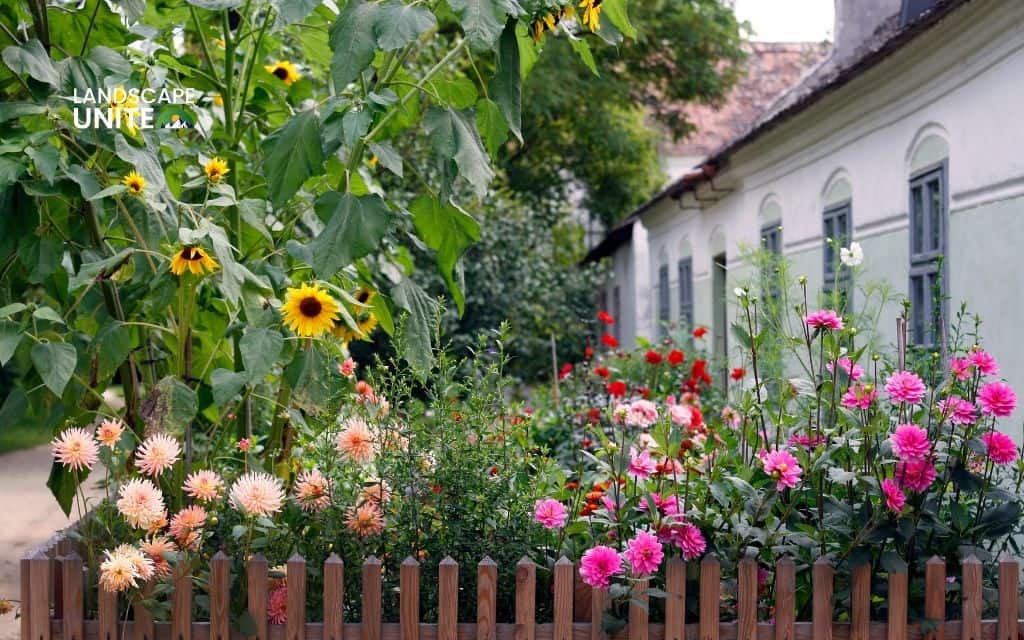
25 best plants for front of house
Selecting the right foundation plants transforms your home’s exterior from ordinary to extraordinary. These 25 plants are organized by type to help you create balanced, beautiful front yard landscapes.
Low-maintenance shrubs for front of house
1. Boxwood (Buxus)
Boxwood remains the gold standard for foundation planting due to its dense, evergreen foliage and natural rounded shape. This classic shrub creates clean, structured borders that complement any architectural style.
Boxwood tolerates partial shade to full sun and requires minimal pruning – just once or twice annually to maintain shape. Varieties like ‘Green Velvet’ and ‘Winter Gem’ offer excellent cold tolerance. Plant 2 – 3 feet from your foundation for proper air circulation.
2. Hydrangea
Few flowering shrubs make a statement quite like hydrangea. These bushes produce massive blooms from early summer through fall, with flower heads reaching 8 – 12 inches across.
Hydrangea macrophylla thrives in morning sun with afternoon shade, making it perfect for east-facing foundations.
Choose ‘Endless Summer’ for repeat blooming or ‘Annabelle’ for cold hardiness to zone 3. A well-placed hydrangea in front of the house creates an instant cottage charm.
3. Azalea
These spring-blooming beauties excel as foundation shrubs in shaded locations where other flowering plants struggle. Azaleas burst into color each April and May, covering themselves in pink, white, red, or purple blooms.
Evergreen varieties maintain foliage year-round, while deciduous types offer brilliant fall color.
They prefer acidic soil and dappled shade, making them ideal companions for shade trees. Hardy in zones 6-9, with some varieties tolerating zone 5.
4. Dwarf Alberta Spruce
This compact conifer provides year-round structure without overwhelming small spaces.
Growing just 10 – 13 feet tall over many years, Dwarf Alberta Spruce maintains a tight, pyramidal shape with minimal pruning. Its bright green needles add textural contrast to flowering perennials.
Extremely cold-hardy (zones 2-8) and drought-tolerant once established, this evergreen works beautifully as a specimen plant flanking doorways.
5. Spirea
For low maintenance shrubs, Spirea delivers maximum impact with minimal care. This deciduous shrub produces cascading clusters of pink or white blooms in spring or summer, depending on variety.
‘Little Princess’ stays compact at 2-3 feet, perfect for smaller beds, while ‘Goldflame’ offers colorful foliage that shifts from bronze to gold throughout the season.
Spirea tolerates various soil types, requires no deadheading, and thrives in zones 3-8.
6. Nandina (Heavenly Bamboo)
Despite its common name, Nandina isn’t bamboo – it’s a multi-season shrub that adds unique texture to foundation plantings.
New growth emerges bronze-red, matures to green, then transforms back to brilliant red in fall and winter. White flowers in summer give way to red berries that birds love.
Varieties like ‘Fire Power’ stay compact (2 – 3 feet), hardy in zones 6 – 10.
7. Japanese Pieris
This underutilized evergreen shrub deserves more attention in front yard landscapes.
Japanese Pieris produces cascading chains of white or pink bell-shaped flowers in early spring, along with colorful new growth that emerges red or bronze. The glossy, dark green leaves provide year-round interest.
Prefers partial shade and acidic soil, similar to azaleas and rhododendrons. Hardy in zones 5-8, reaching 4-6 feet tall.
8. Ninebark (Physocarpus)
Native to North America, Ninebark offers outstanding durability with striking visual appeal. This deciduous shrub features colorful foliage (purple, copper, or gold depending on variety), peeling bark that adds winter interest, and clusters of white or pink flowers in spring.
‘Diablo’ provides deep purple foliage, while ‘Coppertina’ offers copper-orange tones. Extremely adaptable to various soils and drought-tolerant once established. Hardy in zones 2 – 7.
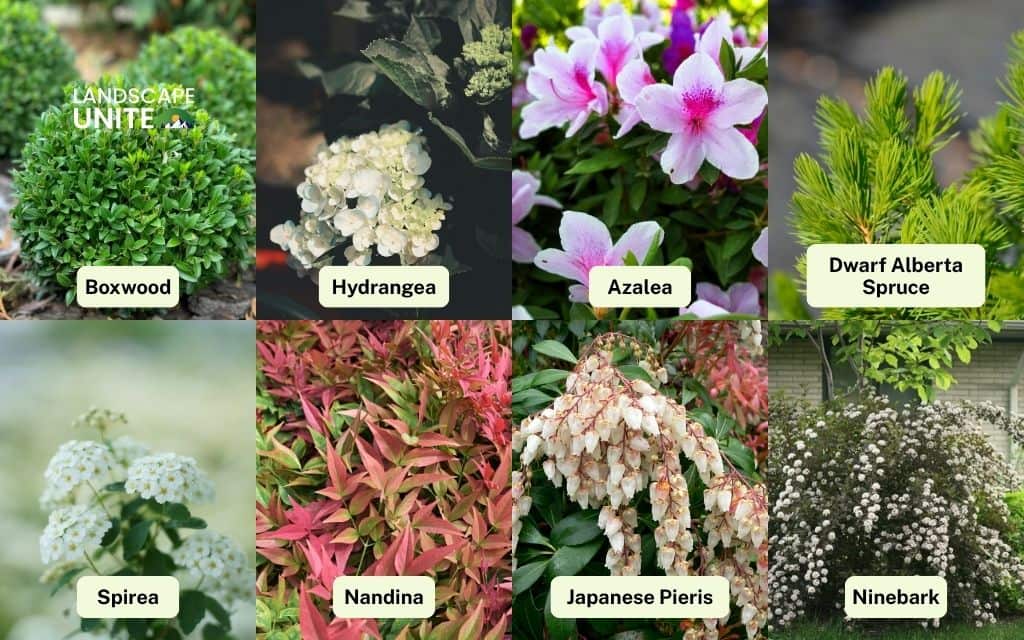
Perennials for front of house flower beds
9. Hosta
When you need perennials for front of house locations with shade, Hosta reigns supreme.
These shade-loving plants feature broad, sculptural leaves in colors ranging from deep green to chartreuse, blue, and variegated patterns. Many varieties produce fragrant white or lavender flower spikes in summer.
Hostas fill empty spaces quickly, require little care, and return bigger each year. Perfect for north-facing foundations or under tree canopies. Hardy in zones 3 – 9.
10. Daylily (Hemerocallis)
Daylilies rank among the most reliable perennial plants. These sun-loving perennials produce trumpet-shaped blooms continuously from late spring through summer, with modern reblooming varieties extending the show even longer.
Each flower lasts just one day, but established clumps produce dozens of buds. Daylilies tolerate drought, poor soil, and neglect while multiplying generously. Available in nearly every color except true blue. Hardy in zones 3 – 9.
11. Black-Eyed Susan (Rudbeckia)
Bright yellow daisy-like flowers with dark centers make Black-Eyed Susan an essential component of front yard plants schemes.
This native perennial blooms from July through September, attracting butterflies and providing cheerful color during summer’s hottest months. Plants self-sow modestly, naturalizing in sunny beds without becoming invasive.
Completely drought-tolerant once established and deer-resistant. Perfect for American landscapes in zones 3 – 9.
12. Coneflower (Echinacea)
Purple Coneflower excels as both a beautiful flowering perennial and wildlife magnet. The distinctive daisy-shaped blooms with raised centers appear from June through September, attracting butterflies, bees, and goldfinches who feast on the seeds.
Modern hybrids offer colors beyond purple – pink, orange, white, and yellow. Coneflowers tolerate heat, humidity, and drought while requiring zero deadheading. Native to North America and hardy in zones 3 – 9.
13. Lavender
Fragrant and elegant, Lavender brings Mediterranean charm to sunny entryways. This woody perennial produces aromatic purple or white flower spikes from late spring through summer, with silvery-gray foliage providing year-round texture.
English Lavender (Lavandula angustifolia) offers the best cold hardiness for northern gardens (zones 5-9). Plant near walkways where brushing against it releases the calming scent.
Excellent for low-maintenance outdoor plants full sun locations.
14. Coral Bells (Heuchera)
When you want colorful foliage that shines from spring through frost, Coral Bells delivers. These compact perennials feature ruffled leaves in shades of purple, bronze, lime green, caramel, and burgundy – often with silvery overlays.
Delicate flower spikes appear in late spring. Coral Bells work beautifully as edging plants for flower beds in front of houses, particularly in partial shade. The colorful foliage adds visual interest even when not flowering. Hardy in zones 4 – 9.
15. Salvia
For long-lasting color and pollinator appeal, few perennials outperform Salvia. This drought-tolerant perennial produces vertical spikes of purple, blue, pink, or white flowers from late spring through fall.
‘May Night’ offers deep purple blooms, while ‘Caradonna’ features striking purple-black stems. Salvia requires no deadheading and actually thrives on neglect. Deer and rabbit resistant. Hardy in zones 4 – 9.
16. Peony
No perennial offers more luxurious blooms than Peony. These long-lived plants produce enormous, often fragrant flowers in late spring, with each established clump creating dozens of blooms.
Peonies live for decades in the same location, making them wise investments for foundation plants. The glossy green foliage remains attractive all summer and turns bronze in fall. Requires well-drained soil and full sun. Hardy in zones 3 – 8.
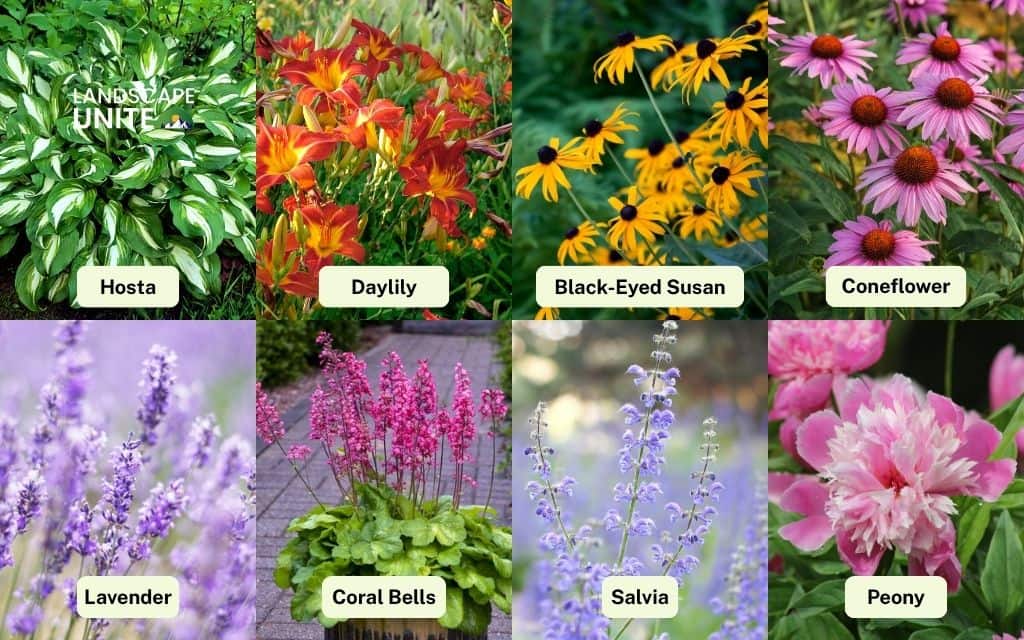
Small bushes and compact plants for entryways
17. Box Honeysuckle (Lonicera nitida)
This dense, fine-textured shrub creates living architecture near entryways. Box Honeysuckle maintains a naturally compact form (3 – 4 feet) and tolerates frequent shaping for formal designs.
The tiny evergreen leaves create a soft texture that contrasts beautifully with broader-leaved plants. More cold-hardy than true boxwood in some regions. Perfect for planting where space is limited. Hardy in zones 7 – 9.
18. Roses (Shrub or Knock Out Varieties)
Modern shrub roses eliminate the fuss traditionally associated with rose growing. Knock Out roses bloom continuously from spring through frost with minimal care – no deadheading, no spraying, and minimal pruning required.
These low maintenance bushes resist disease and tolerate various conditions. Available in red, pink, coral, and yellow. Plant in groups of three for dramatic impact. Hardy in zones 5 – 10.
19. Barberry (Berberis thunbergii)
For bold color contrast, red-leaved Barberry creates instant visual impact. Varieties like ‘Crimson Pygmy’ and ‘Rose Glow’ maintain compact sizes (2-3 feet) while providing burgundy or variegated pink-and-burgundy foliage.
The dense branching deters foot traffic naturally (thorns!), making Barberry strategic for landscaping bushes for front of house beds adjacent to walkways. Tolerates full sun to partial shade. Hardy in zones 4 – 8.
20. Dwarf Hydrangea (‘Little Lime’ or ‘Bobo’)
These miniature hydrangeas pack full-sized beauty into compact frames perfect for small spaces. ‘Little Lime’ grows just 3 – 5 feet tall while producing the same lime-green-to-pink flowers as its full-sized parent ‘Limelight.’
‘Bobo’ stays even smaller at 2 – 3 feet with large white blooms that age to pink. Ideal small shrubs for front of house where traditional hydrangeas overwhelm the space. Hardy in zones 3 – 8.
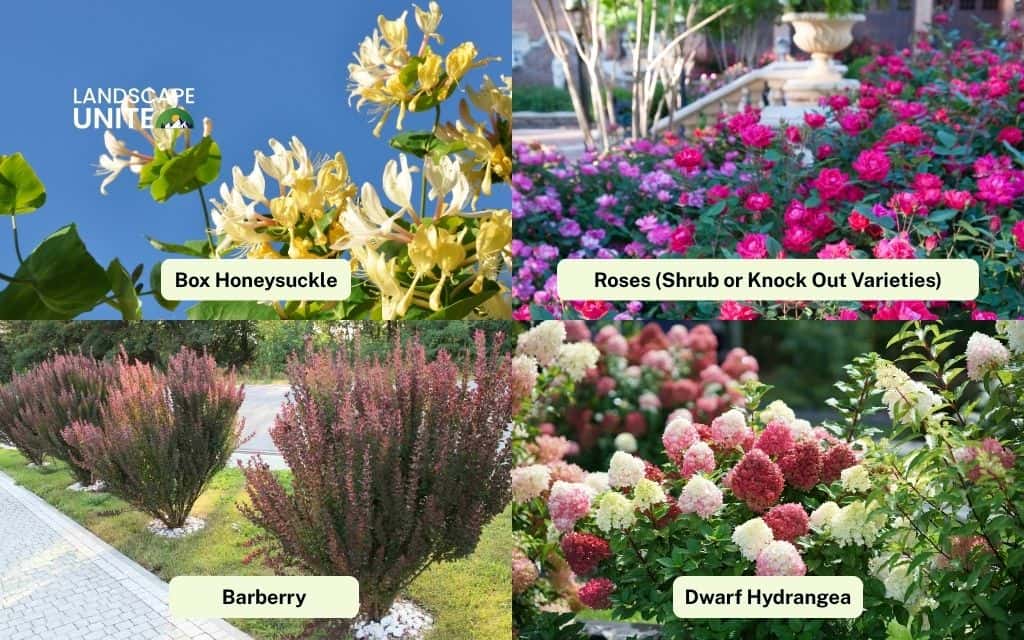
Evergreen foundation plants for year-round appeal
21. Holly (Ilex)
Holly provides classic four-season beauty with glossy evergreen leaves and bright red berries (on female plants) that persist through winter. Compact varieties like ‘China Girl’ (6 – 8 feet) fit foundation beds without blocking windows.
Holly tolerates sun or partial shade and various soil conditions. The berries feed birds during winter months. Choose both male and female plants for berry production. These plants work in zones 5 – 9.
22. Juniper (Juniperus)
When you need hardy evergreens for challenging locations, Juniper delivers. These drought-tolerant, low-maintenance conifers thrive in full sun and poor soil where other plants struggle.
Prostrate varieties like ‘Blue Rug’ spread horizontally (perfect groundcovers), while upright forms like ‘Skyrocket’ create narrow vertical accents. Juniper’s blue-green or golden foliage adds textural variety to foundation shrubs for front of house. Hardy in zones 3 – 9.
23. Rhododendron
Rhododendron combines evergreen foliage with spectacular spring flower displays. These broad-leaved shrubs produce trusses of showy blooms in pink, purple, white, red, or yellow.
Modern compact varieties like ‘PJM’ (3 – 6 feet) fit foundation beds better than older giants. Rhododendrons prefer acidic soil, partial shade, and consistent moisture. Plant on the north or east side of your home for best results. Hardy in zones 5 – 8.
24. Arborvitae (Thuja)
For privacy screening and vertical structure, Arborvitae excels as foundation plants for front of house corners. These narrow evergreens grow 10 – 15 feet tall while remaining just 3 – 4 feet wide, creating living walls without consuming horizontal space.
‘Emerald Green’ offers superior cold hardiness and maintains vibrant color year-round. Plant 3-4 feet apart for a hedge effect, or use singly as architectural specimens. Hardy in zones 3-8.
25. Boxwood ‘Winter Gem’
This specific boxwood variety deserves special mention for cold-climate gardens. ‘Winter Gem’ maintains its rich green color through harsh winters (unlike some boxwoods that are bronze), making it ideal in northern regions.
Compact growth (4 – 5 feet) and dense branching create perfect low hedges for defining foundation edges. Tolerates sun or partial shade and requires minimal pruning. Hardy in zones 4 – 9.
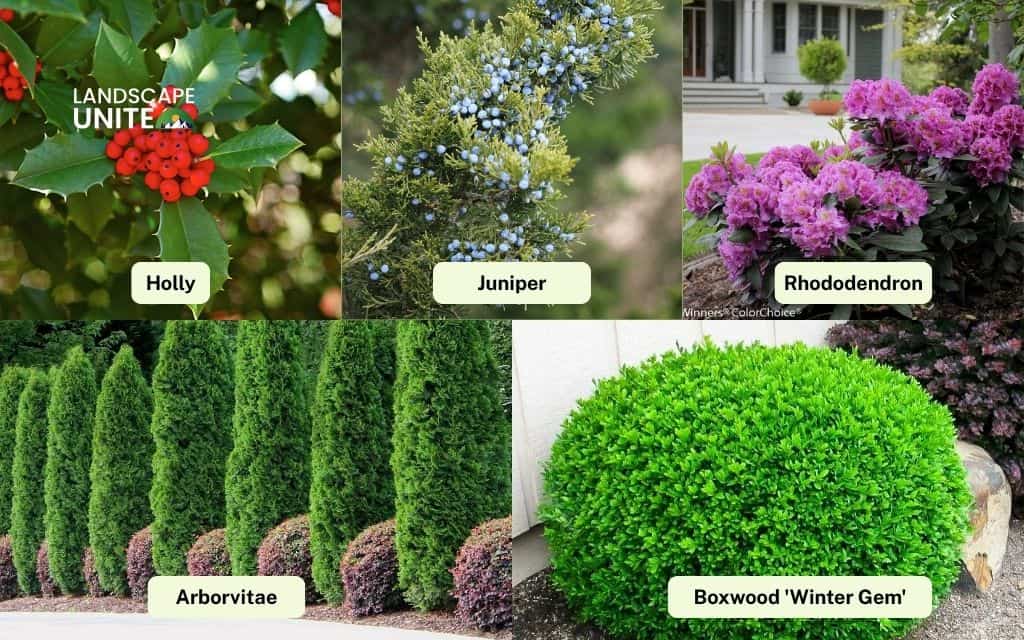
Foundation planting ideas for every home style
Modern & minimalist
Contemporary homes benefit from restraint and symmetry. Use architectural evergreens as focal points – matching Dwarf Alberta Spruces flanking the front door, or identical boxwood spheres in pairs. Keep planting beds clean-lined with minimal plant varieties repeated in odd numbers (3s or 5s).
Incorporate ornamental grasses like Karl Foerster feather reed grass for vertical movement. Limit color to one or two flower types – perhaps white hydrangeas and purple salvia.
Use dark mulch or white stone for stark contrast. The goal: clean, uncluttered lines that complement modern architecture rather than compete with it.
Cottage or traditional homes
Historic and traditional homes welcome abundant, romantic plantings. Layer multiple flowering shrubs and perennials for an overflowing appearance. Combine hydrangeas with roses, coneflowers, daylilies, and peonies for continuous bloom succession from spring through fall.
Mix soft textures and allow plants to mingle naturally. Include fragrant plants like lavender near walkways. Let climbing roses frame the front door. Use wood mulch for a natural appearance.
Embrace a “more is more” philosophy with varied colors and textures creating an abundant, lived-in feel.
Low-maintenance & drought-tolerant
You should choose native plants adapted to your region. In dry climates, select spirea, salvia, coneflower, daylily, and juniper – all drought-tolerant once established.
Replace traditional mulch with decorative rock or gravel to reduce maintenance and conserve water. Install drip irrigation on timers for efficient watering. Group plants by water needs so you’re not overwatering drought-tolerant plants to satisfy thirsty companions.
Choose plants with long bloom periods that don’t require deadheading, like Knock Out roses and salvia. Avoid plants requiring frequent division or pruning.
Design tips for front of house landscaping
Creating visually appealing plants for foundation arrangements requires more than just choosing beautiful plants, you need strategic design principles.
Layer for depth and balance
Professional-looking foundation planting ideas rely on layering. Position taller shrubs (4-6 feet) near the house foundation, medium plants (2-3 feet) in the middle layer, and shorter perennials or groundcovers (under 18 inches) along the front edge. This graduated approach creates depth and prevents a flat, two-dimensional appearance.
Choose complementary colors & textures
Combine soft, billowy textures (hostas, spirea) with structured forms (boxwood, dwarf spruce) for visual contrast. Pair fine textures (ornamental grasses, threadleaf coreopsis) with bold foliage (hosta, coneflower) to prevent monotony.
Color-wise, limit your palette to 3 – 4 colors repeated throughout the bed rather than planting every color available. White, purple, and pink with silver foliage creates sophisticated elegance.
Yellow, orange, and burgundy foliage produces warm, welcoming vibes. Blue-green evergreens with white flowers and purple accents offer timeless appeal.
Match plants to light conditions
The most common mistake is ignoring sun exposure.
- South and west-facing foundations receive intense afternoon sun and heat, choosing sun lovers like lavender, black-eyed susan, daylily, and juniper.
- North-facing foundations remain shaded most of the day – select shade-tolerant plants like hostas, azaleas, coral bells, and rhododendrons.
- East-facing locations with morning sun and afternoon shade suit hydrangeas, Japanese pieris, and astilbe perfectly.
Most plant tags provide sun requirements (full sun = 6+ hours, partial shade = 3 – 6 hours, full shade = less than 3 hours).
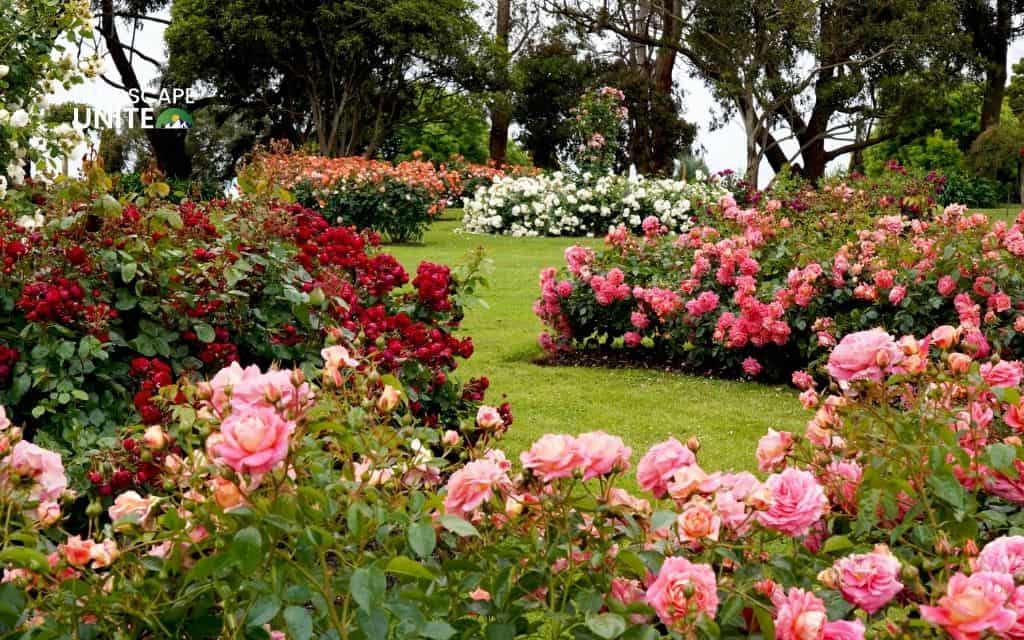
Conclusion
The best plants for front of house landscaping combine evergreen structure, seasonal color, and manageable maintenance. From classic boxwood and hydrangeas to hardy perennials like coneflowers and daylilies, these 25 plants deliver proven performance across diverse American climates.
Need more professional advice on designing stunning flower beds? Explore our comprehensive gardening resource center for tested strategies and expert insights.
Frequently asked questions (FAQs)
What are the best low-maintenance plants for the front of a house?
Boxwood, lavender, spirea, and daylilies top the list for low maintenance foundation plants. Boxwood needs just 1 – 2 prunings yearly, lavender thrives on neglect in sunny spots, spirea blooms without deadheading, and daylilies tolerate drought while blooming for weeks. Add Knock Out roses for continuous blooms with zero deadheading and native coneflowers that thrive naturally.
Can I plant near my home’s foundation?
Yes, choose shallow-rooted shrubs like hydrangea, boxwood, or azaleas and plant 18 – 24 inches from your siding for air circulation. Avoid aggressive-rooted plants and ensure proper drainage slopes away from your foundation to prevent moisture damage.
What plants look good year-round in front of a house?
Evergreen shrubs like juniper, holly, boxwood, arborvitae, and rhododendron maintain foliage through all seasons. Combine with multi-season plants like Nandina (colorful foliage transitions plus winter berries) and coral bells (colorful leaves spring through frost) for complete year-round appeal.
Which flowers bloom all summer for the front yard?
Coneflowers, black-eyed susans, salvia, and reblooming daylilies provide continuous color from late spring through fall. Salvia blooms May through frost, while modern daylilies like ‘Stella de Oro’ flower all summer. Add Knock Out roses for April-to-November color.
What plants increase curb appeal the most?
Hydrangeas, roses, and lavender deliver instant impact. Hydrangeas create dramatic focal points with massive, long-lasting blooms. Knock Out roses provide continuous color with classic elegance. Lavender adds Mediterranean charm and fragrance near entryways. Combine with structured boxwood and colorful perennials for professional results.
What are low maintenance outdoor plants for the porch?
Containerized succulents, sedums, and ornamental grasses thrive with weekly watering. Geraniums bloom all summer with minimal deadheading. For shade, try ferns and coleus. Use self-watering containers to reduce maintenance further.
What is the best plant for the front door entrance?
Matching pairs create elegant symmetry—try boxwood spheres, Dwarf Alberta Spruces, or topiaries in identical containers flanking your door. Choose based on sun exposure: lavender and roses for sunny entries, hostas and ferns for shaded doors.
What is a good foundation shrub?
Boxwood, hydrangea, and azalea consistently perform well. Boxwood offers evergreen structure (zones 5-9), hydrangea provides spectacular blooms (zones 3-9), and azalea delivers spring color in shade (zones 5-9). Match the shrub’s mature size to your space and choose varieties suited to your sun exposure and climate zone.
